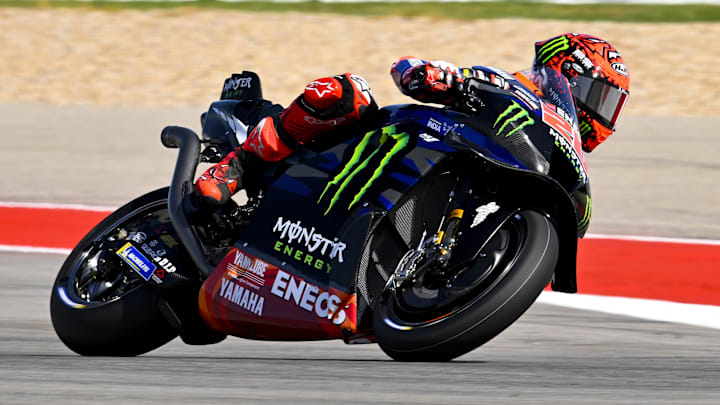Yamaha Follows Ducati's Footsteps with New Ride Height System for Thai MotoGP

Yamaha is set to break new ground by introducing a pioneering ride-height system in the upcoming Thai MotoGP, echoing a strategy that Ducati first employed back in 2018. This technology, introduced by Ducati, has dramatically influenced motorcycle racing by optimizing the bike's center of gravity during corner exits, thereby improving performance metrics.
In anticipation of the Thai MotoGP, Yamaha has embraced this technology, showcasing it through Spanish rider Alex Rins of the Monster Energy Yamaha MotoGP team at the Buriram International Circuit.
The ride-height system employs either hydraulic or pneumatic actuators to adapt the suspension of the motorcycle. The focus of this system is its compliance with the 2023 regulations, which necessitate the adjustment of the rear ride height exclusively and not changes to the front. The adjustments aim to limit front wheel lift during acceleration and boost handling capabilities—improvements particularly advantageous on circuits featuring long straights interspersed with sharp curves, such as Buriram.
As Alex Rins explained:
"Yamaha created an automatic one - we say automatic, but you still need to press - so here we are going to use it."
Historically, ride height devices have been integral to motorcycle sports, targeting improved starts by lowering the bike's center of gravity. Ducati's introduction of rear ride-height devices in MotoGP in 2018 marked the beginning of a new era, attracting swift adoption by other manufacturers. By the end of 2021, most teams employed both holeshot and rear ride-height systems. However, in a nig regulatory change, the Grand Prix Commission (GPC) imposed a ban on front ride-height devices starting in 2023, following intense debates among manufacturers.
While five factories opposed such devices, Ducati continued to advocate for their performance benefits. Nevertheless, rear ride-height mechanisms remain permissible under current regulations.
The upcoming race at the Buriram International Circuit provides an ideal venue for showcasing the new ride-height system's efficacy due to the track's demanding layout, which varies between long straights and tight corners. Alex Rins noted the track's potential for demonstrating the system's benefits:
"[It] looks like the same system as Ducati. For example, we are going to use it exiting from the second last corner. I mean we activate it and we then [don't] push again until before corner four. So for sure, it's less demanding for the finger!"
He continued:
"This is the main benefit because, for example, the first time they brought it was in Austria and it was not working at 100%. So I was using a mix.
"But in the end, it's quite similar [performance] and in my case - since they were introduced in '20 or '21 - I've always used manual, so I'm used to using it."
Rins then turned to his teammate to explain how their bikes differ:
"We have the same engine but with a different configuration. Inside is quite different," Rins shared. "It's a configuration that we tested quite a lot of times in Valencia, Mugello, and I always prefer this kind of engine."
Yamaha anticipates the release of a new engine specification with greater speed potential before the close of the 2024 season, according to Rins.
"We will have, I think, before the end of the season a new spec [engine] with more top speed," he predicted.
